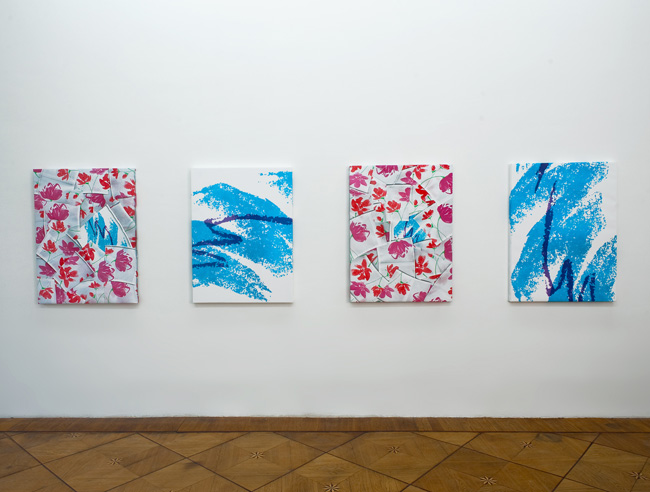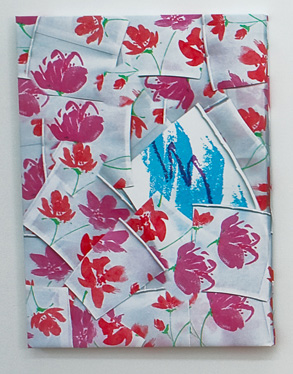
I tweeted last year* to Michael Bell-Smith that dump.fm-ers had done about 100,000 riffs on the '80s style "solo jazz" paper cup design (example) not realizing he'd done the work above, "Flowers/Jazz," in 2010. The image is from his website; according to Foxy Production they are ink jet prints on canvas, 30 x 20 in.
A detail of the above photo shows these are smashed or flattened cups:

These are quite elegant but somehow lacking the gritty street panache of melipone's Master Shake Solo Jazz cup, ben_dover's Brute solo jazz and copulating solo jazz corn ears, cloroxxx's solo jazz headphones, etc etc.
*am not proud to use that phrase but don't know how else to describe what happened
